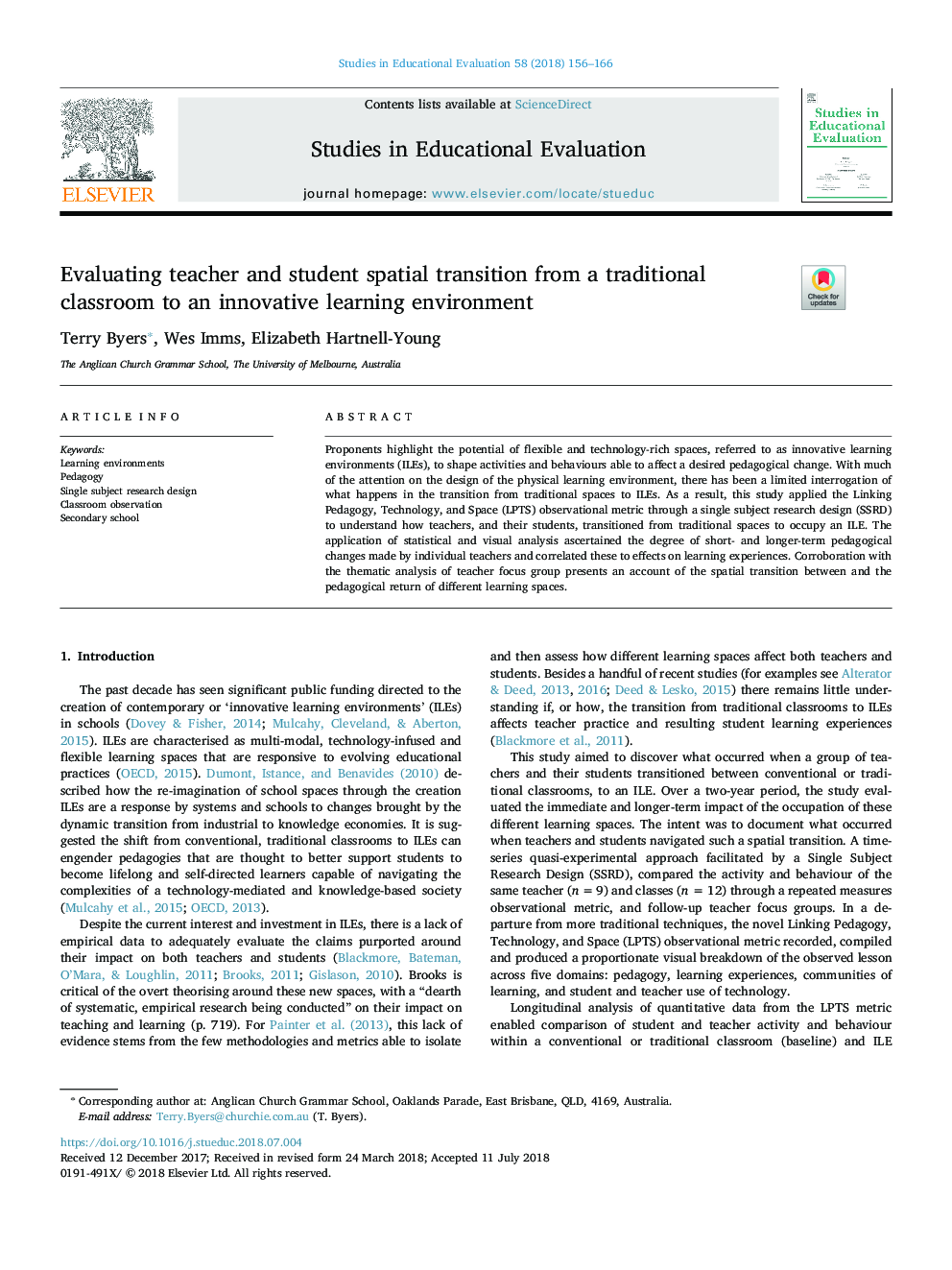| Article ID | Journal | Published Year | Pages | File Type |
|---|---|---|---|---|
| 6848992 | Studies in Educational Evaluation | 2018 | 11 Pages |
Abstract
Proponents highlight the potential of flexible and technology-rich spaces, referred to as innovative learning environments (ILEs), to shape activities and behaviours able to affect a desired pedagogical change. With much of the attention on the design of the physical learning environment, there has been a limited interrogation of what happens in the transition from traditional spaces to ILEs. As a result, this study applied the Linking Pedagogy, Technology, and Space (LPTS) observational metric through a single subject research design (SSRD) to understand how teachers, and their students, transitioned from traditional spaces to occupy an ILE. The application of statistical and visual analysis ascertained the degree of short- and longer-term pedagogical changes made by individual teachers and correlated these to effects on learning experiences. Corroboration with the thematic analysis of teacher focus group presents an account of the spatial transition between and the pedagogical return of different learning spaces.
Related Topics
Social Sciences and Humanities
Social Sciences
Education
Authors
Terry Byers, Wes Imms, Elizabeth Hartnell-Young,
